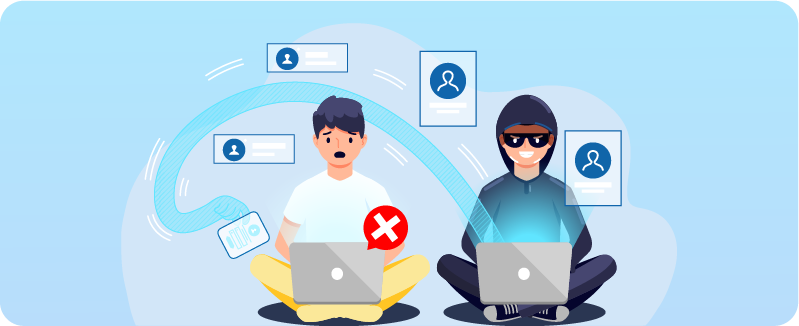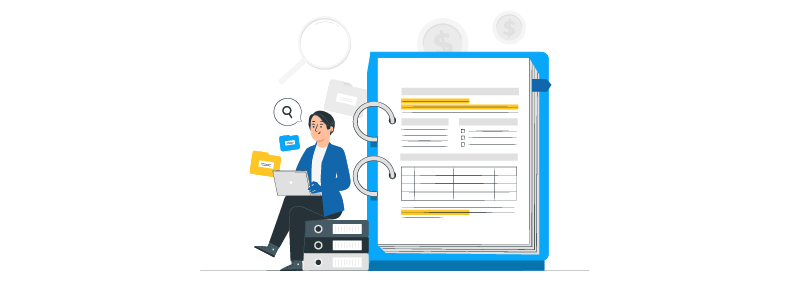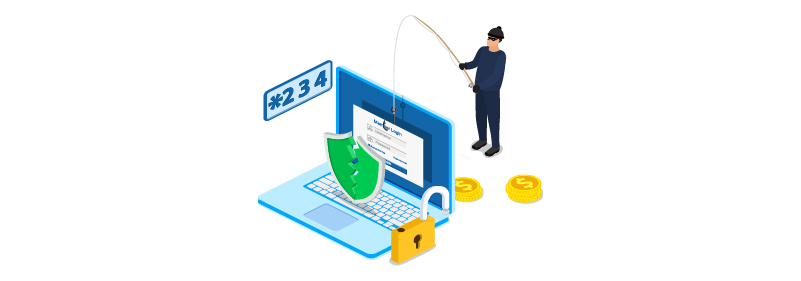- 30 Apr 2022
- Post Views: 9790


India is witnessing a dramatic rise in the number of digital transactions. But this calls for tips and caution to ensure that your financial decisions are safe and rational. A recent report by The Economic Times found that the biggest fear Indians possess while making digital transactions is vulnerability to fraud. This concern should not go unnoticed.
The data is a clear indicator of what the reality is. Over 27 million Indian adults have been a victim of identity theft between 2020 and 2021. If you look at global records published by Norton LifeLock, nearly 208 million people across 10 countries, including India, have experienced identity theft in the last 12 months alone.
But there are precautionary measures you can take to protect your credit profile and avoid becoming a victim of identity theft or identity fraud.

#1 Keep a close eye on your financial accounts

The most important step to protect your credit profile begins with monitoring your financial statements and looking for potentially suspicious activities. Keep a tab on your bank statements, credit card statements, and credit reports to identify any errors or discrepancies. The more closely you monitor and manage your financial statements, the better. If you find any suspicious activity, immediately alert the bank or financial institution you are associated with.
#2 Recognize and avoid phishing scams

Countless people have been victims of phishing attacks due to which they have unknowingly shared confidential bank information, security numbers, and much more. From illegitimate links in emails to suspicious attachments and getting people to enter personal information and passwords on untrusted websites, scammers have identified multiple ways of duping unsuspecting individuals. Once they have access, scamsters use the identity of the individual to trap friends and relatives as well by requesting monetary assistance through social platforms, emails, etc. But you can protect your accounts by using multi-factor authentication, which makes it difficult for scammers to log into your account, even if they get access to your username or password. Similarly, protect your computer system and mobile phone by using security software so they can deal with security threats. Most importantly, protect all your data by backing it up to an external hard drive or cloud storage.
#3 Be wary of public networks

When you use an unsecured public network, your device can accidentally or unknowingly get malware or virus, which can expose your data to hackers and can lead to identity fraud. So, when connecting to the public internet, use a VPN to surf, as it encrypts your data traffic and acts as a protective tunnel between the browser and server. But if you don’t have access to a VPN, ensure you are only visiting encrypted sites. Additionally, always turn off your automatic connection, avoid running financial transactions on public networks, and look for ‘forget network’ after using public wi-fi.
#4 Review all personal details you share online

Confidential personal information like your bank account details, Aadhar number, and date of birth can be used fraudulently. Scammers can exploit this data to secure credit against your name. The unfortunate part is that you won’t know your details have been misused until you get notified by your bank or financial institution.
#5 Dispose of bank and other financial or identity-related documents carefully

If you plan to dispose of your bank or identity-related documents, ensure you get rid of them in the right way and at the right place so that the information printed on those documents is not visible. Take for instance your old passbooks or bank statements. Such documents, with your name and address on them, should be torn or burnt instead of being discarded in public dustbins.
#6 Monitor your credit report regularly and flag any fraudulent activity

Checking your Credit Score and Report regularly is one of the best ways to monitor all your credit cards and loan accounts at once. The ‘accounts information’ section of your Credit Report is an overview of all the credit you have availed. Review this section and notify credit bureaus in case of any accounts that you do not recognize as your own. This will help you stay alert for any suspicious activity that indicates credit fraud and identity theft.
Despite taking all the necessary precautions, if you notice any of the following signs, you may have been a victim of identity theft and fraud.
To sum it up
We know it’s worrying to discover that you have been a victim of identity theft, but there are certain steps that you can take to clear up your credit profile and protect yourself in the future. Firstly, get help from your financial institution or bank if you have received any statements, bills, or demand notices. Request for an immediate password change of your internet banking, emails, social media, applications with bank information stored, and other sources there may be. Lastly, thoroughly analyze your credit report for potential new account openings or hire financial experts to do that for you. They may be able to reduce your risk of a higher financial loss or other damages.
Safeguard yourself from digital lending frauds, and keep following the DMI blog for more.


